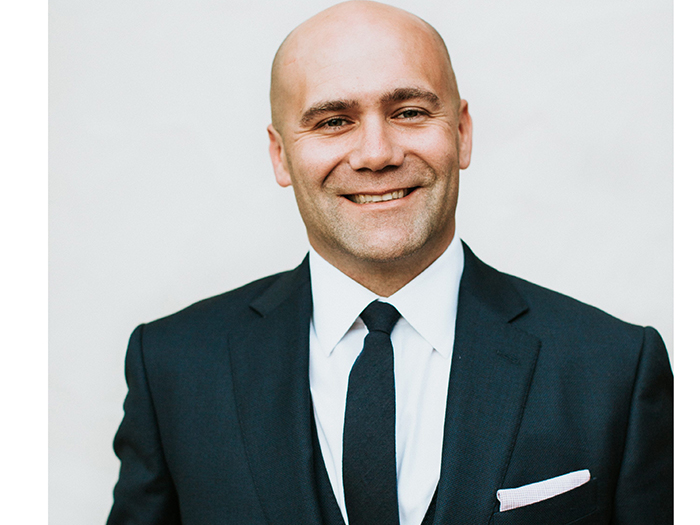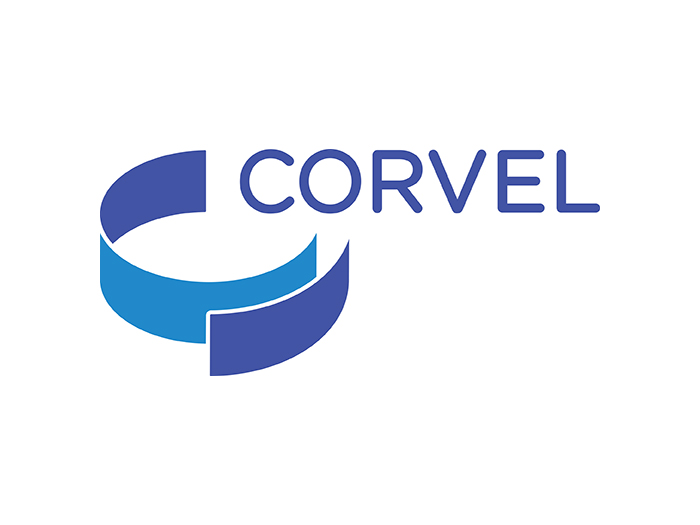13 Questions for Clearspeed’s Alex Martin

Risk & Insurance® had the opportunity to catch up with Alex Martin, the CEO and cofounder of Clearspeed, an A.I.-enabled voice analytics company that assesses the risk of fraud through speech.
What follows is a transcript of that discussion, edited for length and clarity.
Risk & Insurance: What business opportunities are you excited about in 2023?
Alex Martin: We’re excited about a few things. In particular, on our consumer side, leveraging our technology to serve the insurance space.
We have existing applications of our voice technology in the security and protection space, and pre-employment screening, among other use cases. While there’s myriad applications for voice analytics technology, our laser-focus this year is the insurance market and empowering our clients seeking to improve customer experience, scale with confidence and reduce fraud.
R&I: What are your key goals for the technology?
AM: This is focused around transforming the claims process itself in the insurance claims ecosystem. This is around taking a claimant from a very brief automated questionnaire to payment at lightning speed, while also alerting to risk of fraud that is being missed.
Opportunistic fraud is on the rise, so there’s a lot of great tech that’s going after the criminals, and those models are getting smarter and stronger. But this is around how to not harm the customer experience for the good claimant, while at the same time alerting to fraud that’s harming everyone in that ecosystem.
R&I: Are we thinking mostly workers’ comp fraud?
AM: Ultimately, absolutely — it’s one of many use cases. We’ve begun workers’ comp use cases in our Latin American markets, but more broadly we’re focused on personal P&C lines.
R&I: It sounds like predicting and preventing fraud on a number of lines is right in your wheelhouse.
AM: We’re not a predictive model per se. For the insurance industry, we use voice analytics via automated questionnaires to help people through the claims process. The goal is to clear the majority of claims quickly while identifying those that require additional investigating and might be of a higher risk of fraud.
Our background is in security, and insurance and security share the same challenges, where there is a need for balance between speed and security. In the consumer market, we aim to improve this balance by using a scoring model that both fast-tracks claims and improves risk identification.
This is a paradigm shift from traditional methods in both the security and insurance industries.
R&I: Your team was mentioning the hiring process and what kind of expertise you’re looking to bring on. Where are you with that?
AM: Our people are one of the most important assets to our company. We focus on hiring individuals with experience in disrupting traditional industries and processes, and who have an innovator mindset. You’ve got to be willing to embrace and adopt change. We understand that change can be difficult for some, so we strive to provide solutions that are additive and complementary, rather than disruptive.
We seek individuals who have a track record of success in implementing unconventional technologies in conventional industries and who are able to explain and address any fear or uncertainty with data and proof points. This is essential for successfully navigating the digital transformation journey in industries such as insurance.
R&I: You hear a lot of talk about disruption, and I think the longer we watch companies come into insurance and try to improve the process, it’s just becoming much more about cooperation. Is it not really collaboration versus disruption that’s the goal here?
AM: A hundred percent. If you think you’re going to go into the Department of Defense and change how they do business, you’re just not. It’s not going to happen.
We got demonstrable, repeatable results with the tech. Then, that seeped into other elements of the enterprise, and now it’s scaling with a discussion around, again, this evolutionary approach to change. We talk about augmenting very robust systems and processes with sophisticated sensors and sophisticated human practitioners behind them.
You have incredibly smart people. They’re very expensive for a reason. They need to be augmented with better data.
You’ve got incredible technologies that are doing amazing work to clear people quickly and find fraud. The problem is there are gaps, and these gaps are technological and ideological. In real terms, these gaps cost people a lot of money.
The threat risk is very high, so something has to be done about it, but we don’t talk about this revolutionary change. It has to be in concert with humans that see this as a way for them to do their job better and faster, and customers that see this as really providing a step change of improvement, not incremental change that isn’t really worth the investment.
R&I: When you think about customer service and historic ways of doing business and where things sit right now, where do you see things going? What does success look like?
AM: Success from a claims process has to be the ability for a very light but thoughtful, warm touch where you are absolutely at the forefront of that journey. “Hey, get me paid. I pay every month into this protection, and I really just want to get on with my life.”
So, success has to be where someone engages with a piece of software that gets them better results than having to deal with other processes or other humans first. And that’s what we’re trying to do.
It’s all around the introduction of something that accelerates that person, where they’re delighted at the end of it. “Wow, I just got paid and thank you so much, and I’m going to renew my policy with you, and customers are satisfied, and I can just get on with my daily life.”
So, that’s central to the journey.
Now, we have two customers that we think through. There’s one customer that we must please. The other is the carrier or the TPA who has the hard job of processing these and, again, managing that tension between security and speed, or fraud risk and speed. And so, to them, we have to be able to have them sit down, look at their workload on that day, and say, “I’m able to do better and focus our resources more precisely.”
If we can’t do those two things, then we fail. So, we have two customers we’re hoping and aiming to have a successful result with.
R&I: What we know about the TPAs these days is it’s a pretty rough landscape in terms of their ability to retain talent and pick up the right talent. When you think about claims processing and management, do you see that as a pretty big opportunity for you?
AM: Absolutely, I think of it this way. You’ve got everyone going after that top 10%, and those people are going to do fine, and they are just natural with technology. Now, there’s more and more of these people who are retiring or leaving to do other things, and so you’re going after a population that is less experienced.
There’s risk in that, and that is mitigated by training, enablement and empowerment. Technology done right can do that.
If you have a training script or a program they’re bought into, and you incentivize people to get through a process with care and speed and attention, a great piece of data allows them to do that. It becomes sticky. They become addicted to it because it helps train them. The curve for them to grow becomes a lot faster in terms of being a claims agent.
So, that’s something we think about a lot. If we are also seen as a way to accelerate and improve training and enablement that allows people to get up and into the curve faster and make better claims decisions faster, then that’s a win for the TPA, that’s a win for the customer and, of course, it’s a win for us.
R&I: We talked about this not being disruption, it’s collaboration, and this is a very entrenched, long-standing industry. You mentioned, in getting traction for your company and your startup, that you saw some pretty good results in terms of speed of claims resolution, but also just screening out fraud. Is that correct?
AM: What we’ve seen is, when we are placed at the top of the funnel, as a first touch, we add value because we’re providing a data endpoint that no one else has. While other models are searching and scraping and providing insights that are very helpful, there’s often a lot of false positives there.
At the very first touch, without us, you’re already having a lot of false alerts and you’re immediately disrupting a journey. Then, that goes to a human agent where, given training, enablement and experience, not all agents are created equal.
We have this further layer of complication, and then, ultimately, it comes down to a decision to pay or not or what gets investigated, a further element of cost and expense and friction for a customer.
The early touch points of value we’ve seen are, firstly, the speed at which you can discern — with a unique data point — who needs to be paid faster, and who should go to a second-order system. That second-order alert is in concert with other data points that are complementary in nature, where we have proven that we decrease those false positives because they say, actually, “Let’s just discount one, two, three, but points four and five are still very real on these claims.” And, then we’re seeing the touch of follow-up. The ability, this is really important, of the human interaction, to address what we’re talking about as the rise of opportunistic fraud.
So, the data models I just described are getting better and better and better at looking at the same things, which are routine opportunistic fraudsters, where some people may make a poor decision.
If you can use a data point to then have a human follow-up — again, that’s very gentle, it’s non accusatory — it allows the person to have an opt-out. We’re seeing our dropouts are incredible, and that’s a good person making a wrong decision, being asked a question because of our data in a non-accusatory way, and then just saying, “You know what? Actually, I’m going to drop this claim.”
That saves a ton of money for the carriers. It also allows that person to walk away without having made that decision to say, “I’m going to commit fraud finally,” and everyone is winning there because you’re that last referee point before that bad decision is made.
That’s all to say that this unique data point at the top goes all the way through the process to even pre- and during SIU. We’ve demonstrated that in this ecosystem and integrated into platforms tethered to a human. We’re not a silver bullet or magic wand; but done right, we’ve unlocked significant use cases and value.
R&I: I think that’s a fascinating piece, if a human being is actually talking to you and just saying, “Hey, what’s going on here?”
AM: It really goes back to the central element being trust. If I’m not having that discussion with you, I’ve already been paid. So, trust increases. That’s the currency. That’s the coin of the realm.
I now have greater trust in my carrier to process me. If I have committed fraud or maybe overstated the claim and I have that human experience, nine times out of 10, that person is going to say, “You know what? I’m not going to make it,” because they’re not criminals. They’re just in a bad position. That I have sympathy for and empathy for, and so do the carriers, but you’re just not allowed to commit fraud.
R&I: We get emails every day about new technologies and Insurtechs trying to get a foot in the door. Where do you see the more “cutting-edge” technologies really gaining traction and really having a hope in this ecosystem?
AM: What I’m seeing is related to the industries that were not built for insurance but have a proxy with the pain of the users — both the customer and the carriers. Think about information and cyber and technologies in that realm where they were built for.
Some of the product features need to be changed, and once you do, you really speak to that customer, or anything related. Anything in that information cybersecurity realm is fascinating.
Cutting-edge industries like biotech are the industries that have an imperative to innovate and change and get ahead of the curve — that’s a great proxy. Intelligent technology augments humans experience; think about anything that’s going to be adopted from the claims management standpoint, the innovation that’s helping massive leaps in payroll, or how big tech companies are thinking about building internal engines. Insurance is a great market for them, and really anything that improves operational efficiency but is not being done in insurance today.
Insurance will continue to evolve, and they’ve done an incredible job of staying on and ahead of this problem as best they can, managing this behemoth, and people’s lives and the dollars at stake.
R&I: You mentioned a military background. Can you tell us more about that?
AM: I graduated from the Naval Academy. I became a Marine a couple years after 9/11, was in the infantry in the Marine Corps, and then in reconnaissance. and then our Special Operations Unit. That was very important to me in terms of how I think, what I felt as a calling to be an entrepreneur.
When I left active duty, it was all around “what can I do to continue to serve?” and “what did I see that could have been done better?” That had to be the introduction of technology into the hardest problems that we solved.
I lost a really good friend to a green on blue attack, an insider threat attack, so I thought about that a lot. How do we make sure people’s husbands and wives aren’t taken from them in areas where risk is very, very hard to manage?
That’s the genesis of this company: meeting the people that have now formed the founding team, meeting technologists working on this novel way to clear people, and since 2016 came together at a program at Stanford University and have been working to build and scale what Clearspeed is today.
R&I: Was there anything additional about your aspirations or your company or this industry that you wanted to express?
AM: It’s that we be seen as a partner in change; that this is about evolution, not revolution; that it takes a team on the same side of the table to work through a problem.
Our best, earliest customers were amazing because they were on the same side of the table as us, and they said, “Hey, these three things were phenomenal. Could you change four and five?” So we tuned them. We worked together. And, then we got them exactly what they needed.
That spirit of collaboration and creativity creates a winning culture because we’re all trying to go after the same thing.
If Clearspeed is known in the market as a new, important element that augments human people, human decision-makers, human operators, then we’ll have done our job, because, I believe, that’s the winning culture of how risk management needs to change. It’s philosophical, and it’s actually, in terms of the practice of buying down risk, it has to be from that perspective of teamwork. &










